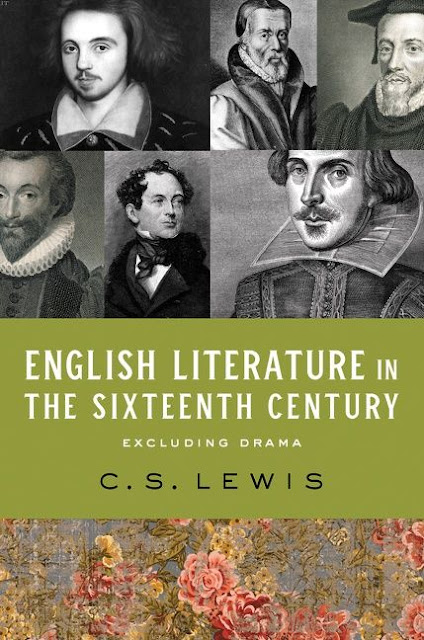We know C.S. Lewis as a popular theologian, a writer of children’s stories like The Chronicles of Narnia and science fiction stories, the man who gave us Mere Christianity, A Grief Observed, and The Screwtape Letters. We know him as one of the Inklings, a small group of Oxford dons (and a few others) who met regularly at The Eagle and Child (or Bird and Baby) Pub and C.S. Lewis’s rooms in Oxford to discuss their works in progress, life, religion, and everything else.
What we often forget is that, before he was a Christian and even after, before his wartime broadcast for the BBC, and before Narnia, Lewis was a scholar. He was a Fellow and Tutor of English Literature at Oxford, and he was chair of Medieval and Renaissance Literature at Cambridge University.
In 1944, he gave a series of lectures at Cambridge under the general title of “English Literature in the 16th Century.” He eventually edited the lectures and published them in 1954 as English Literature in the 16th Century (Excluding Drama). Almost 70 years later, HarperCollins has republished the volume under its 1954 title. It’s a broad choice of subject, made somewhat easier by the “exclusion of drama,” which means the lectures did not include any discussion of Elizabethan drama, including Shakespeare’s early plays.
Still, the subject is large. And Lewis’s grasp of the subject is large, if not astounding. He covers poetry, theology (and it’s a period of a lot of theology), political writing, philosophy, and fiction. And while academic readers may chafe somewhat, the text is highly readable and accessible by general readers – likely a reflection of how the book started life as a lecture series. At times, it seems almost conversational.
 |
| C.S. Lewis |
The broad strokes of understanding are simply described. Literature in the 16th century was marked by a battle between the Scholastics and the Humanists, which the Humanists eventually won (I don’t think Lewis viewed that as a positive development). The was marked by the theological battles between, first, the Catholic establishment and the English translators like John Wycliffe, and then the religious wars between the Protestants and the Catholics. Sir Thomas Moe and John Wycliffe were martyred a year apart and for different reasons. Lewis also devotes considerable attention to one of the most important works of the 16th century – The Book of Common Prayer.
Lewis notes that, for Scotland, the century began as an almost golden age in literature, while for England it was what he calls the “Drab Period.” No one, he notes, would have expected the Drab Period to eventually give way to the amazing English literature of the last half of the century. But it did, and he says he can’t offer a reason for why it happened.
In detail, he covers the greatest writers of the century – Edmund Spenser, Tyndale John Knox, More, Christopher Marlowe, John Donne, Shakespeare (his sonnets).and many others. His descriptions and understanding make it clear that he’s not only read these authors, he’s read about these authors. The breadth and depth of Lewis’s scholarship is astonishing.
English Literature in the Sixteenth Century is not only an in-depth introduction to the great and not-so-great works of the period; it’s also a display of Lewis’s scholarly knowledge and understanding. And it was this incisive mind that also gave us his well-known works on Christianity, which Lewis himself might see as of a piece.

2 comments:
This sounds like an interesting book. I'll look it up. Thanx.
God bless.
Thanks for reading the post!
Post a Comment